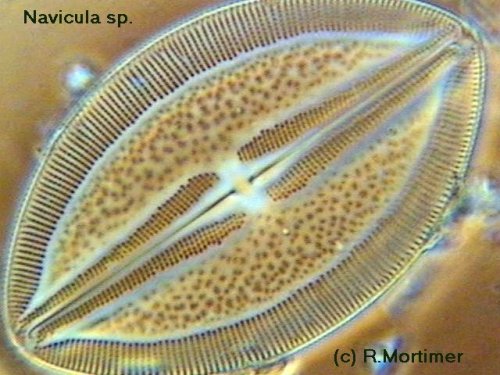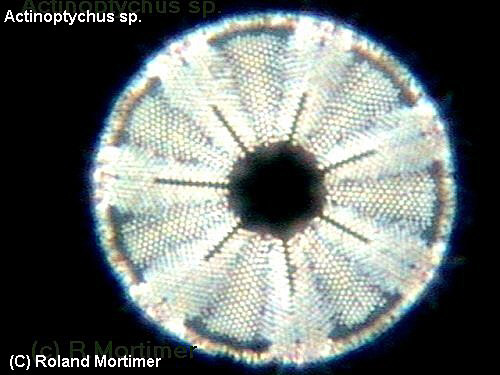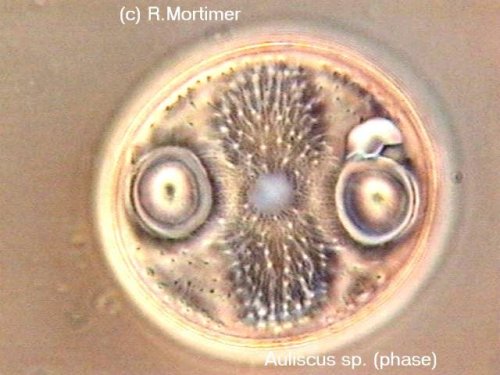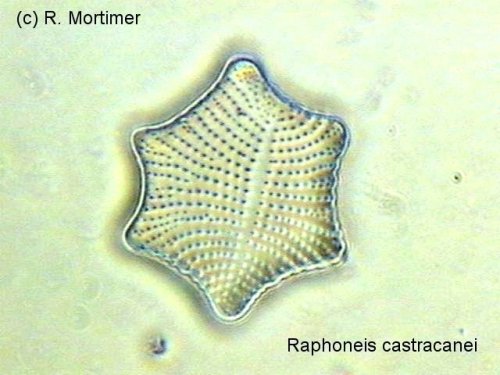|
Rio de Janeiro. by Roland Mortimer, Brazil |
 |
Previous Micscape articles by
the author on diatoms are here -
Part
I, Part II, Part
III, Part IV, Part
V and Part VI.
Guaíba island lies off the coast of Ibicui in the southern region of Rio state. It is a reasonably sized island with two very tiny beaches which face inland. Sitting on the beach and looking around, one feels as if there is nobody else in the world, the island is covered in tropical vegetation way up to the peak of the small mountain in the centre of the island.
There are many strange animals there too but the only thing which spoils it is manís stupidity. On the Ocean facing side of the island the Brazilian government have a huge iron-ore deposit fed hourly by long trains which reach the island via a bridge built specially for the purpose. Ships from all over the world are loaded with ore from the island, this produces huge dark clouds of dust, dangerous dust to say the least. Minerals like iron-ore always have a large silica content and this has put paid to more than a few operators at the depot over the years. However, diatoms love silica and other minerals necessary for their survival, thus the surrounding waters of the island are rich in diatom species, good for the diatoms but I wonder what effect the dust is having on the vegetation, insects and animals living on the island.
I have selected only a few of the most beautiful species I found in samples from the area, I personally feel a slide containing a few interesting diatoms is much better than a strewn slide with many examples of the same species and accordingly make my slides in this form sometimes I mount a slide with only a single diatom if itís rare, this was the case with one of the Auliscus diatoms shown, but this is only my opinion. Everyone I know agrees that the genus Auliscus is extremely difficult to identify, but my best identification for the first two images of Auliscus is Auliscus macraeanus and for the following two, Auliscus gigas.
The larger images were taken with a Leitz Pv (phase) x63 apo objective and the smaller images with a Leitz Pv x40 apo; both used in conjunction with a Leitz Heine condenser and an FK 5x photographic eyepiece. Iíve shown the images in various types of illumination as one type didnít really show all the fine details, in fact the very fine details on the Auliscus sp. 2 images are extremely difficult to see and perhaps need to be tried out with my Pv x90 apo oil objective at a later date.
Comments to the author Roland
Mortimer welcomed.
Image gallery by the author












